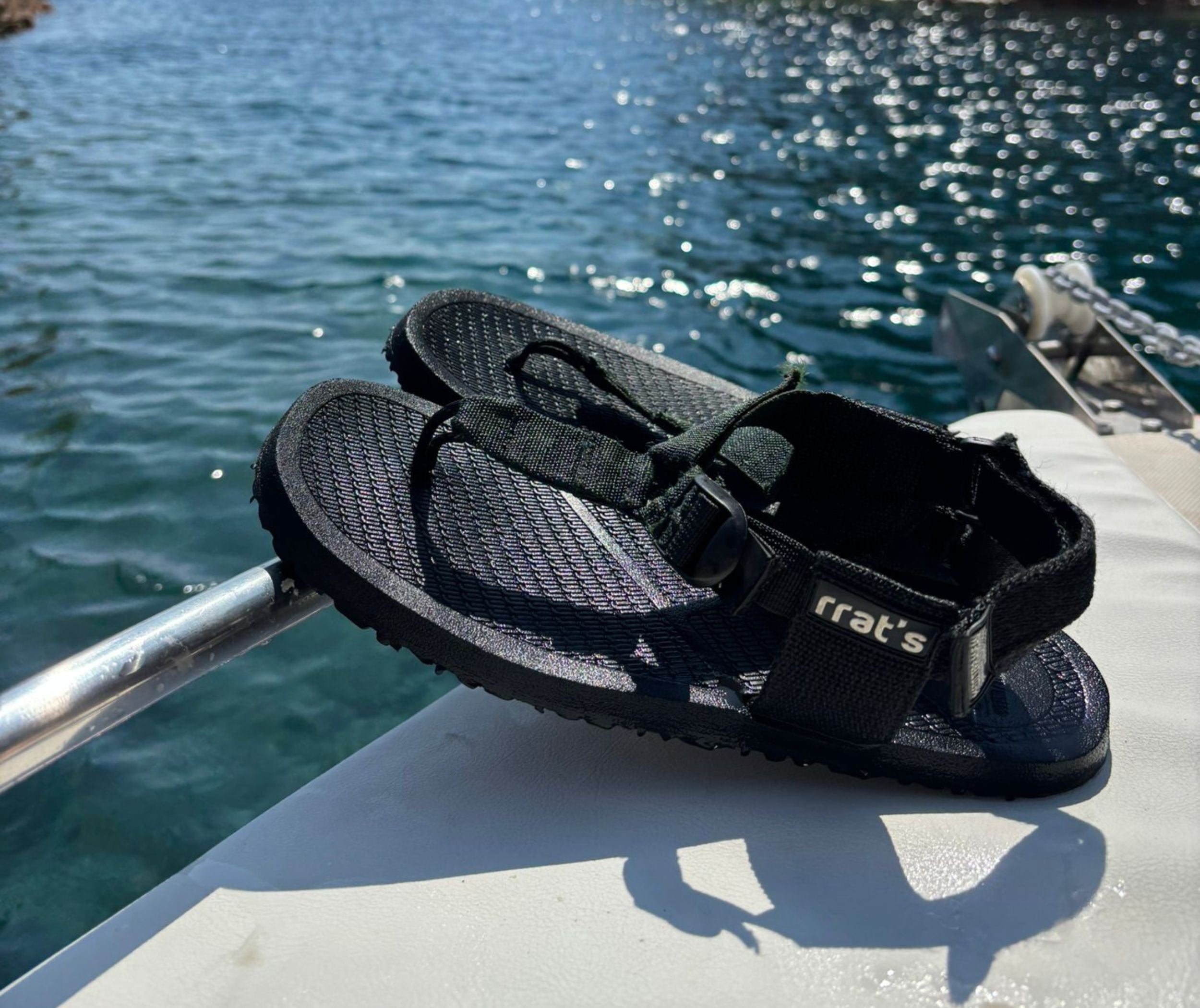Traveling is enriching, but every trip leaves a mark on the planet. Reducing your impact is easier than it seems: choosing hiking sandals as lightweight footwear helps reduce resources and emissions. This change is part of a sustainable travel style, and at RRAT's Outdoor, we promote responsible options that promote a low carbon footprint on every adventure.
Why footwear matters in environmental impact
When we think about our carbon footprint, we often focus on the transportation we use, but we forget that the equipment we carry also has an environmental cost .
Footwear production involves energy consumption, raw material use, waste generation, and emissions from transportation.
Heavy boots, for example, require more materials, are more labor-intensive to manufacture, and their weight increases the energy expenditure required to transport them, both from the factory to the store and on our personal journeys.
Technical mountain sandals , on the other hand, use less raw material, require fewer assembly processes, and their lower weight means they are more efficient to transport.
This effect is multiplied when we consider the thousands of travelers making the same choice: less weight means less fuel consumed on planes, buses, or even in our backpacks during long hikes. Added to this is the fact that, being more versatile, sandals reduce the need to carry multiple pairs of shoes, thus optimizing luggage space and weight.
Choosing lightweight footwear isn't just a gesture of personal comfort, but a practical strategy for reducing our carbon footprint on every trip. The simpler and more multifunctional our gear is, the lower the environmental impact of our adventures.
Sustainable travel: how sandals fit into this philosophy
The concept of sustainable travel involves making choices that minimize the negative impact on the environment and maximize the benefits for local communities. This includes choosing less polluting modes of transportation, choosing responsible accommodations, consuming local products, and also optimizing our luggage to reduce weight and volume.
This is where hiking sandals play a key role. Being lightweight and easy to clean, they eliminate the need to carry multiple pairs of shoes, reduce water and energy expenditure on maintenance, and allow for extended use with minimal wear.
In warm climates, they can be worn without socks, reducing the number of garments we need to carry and wash. On hiking trails, their ventilation helps keep feet cool, preventing problems such as excessive sweating and blisters caused by moisture.
RRAT's Outdoor range of sandals is designed with this in mind. They use durable materials to extend their lifespan, reducing the need to frequently make and purchase new pairs.
Furthermore, all models incorporate sustainable and recyclable materials, reducing the use of virgin materials. And, above all, their versatility allows a single pair to be used in the mountains, city, or beach, avoiding the need to purchase additional footwear for each occasion.
Tips to reduce your carbon footprint with lightweight footwear
- Choose a technical and versatile model that adapts to different environments (beach, mountains, and city) to avoid carrying more footwear than necessary. An example would be RRAT's Outdoor barefoot sandals , ideal for all types of terrain, combining comfort, durability, and sustainability.
- Focus on quality and durability: good design reduces the need for long-term production and transportation.
- Combine lightweight footwear with efficient transportation: opt for trains instead of short flights, and buses or carpools instead of individual vehicles.
- Take care of your shoes: wash them in cold water, avoid dryers or artificial heat, and extend their lifespan. Here's our blog post with a few tips to extend the life of your RRAT sandals.
- Manage your recycling: If your sandals have recycled or recyclable parts, find out how to dispose of them responsibly.
- Walk more, drive less: Take advantage of the lightness of this shoe to explore on foot and reduce the use of motorized transport.
A small step with a big impact
Reducing our carbon footprint on our travels doesn't require extreme measures; it simply requires integrating strategic changes into our travel routines.
Swapping heavy boots for hiking sandals not only lightens your luggage, but also reduces the consumption of materials, energy, and transportation associated with their manufacture and use. When combined with other conscious choices, such as consuming local, reducing waste, and choosing sustainable transportation, the result is a more responsible trip that is consistent with caring for the planet.
RRAT's Outdoor Hiking Sandals , with their focus on durability, versatility, and responsible use of materials, prove that comfort, performance, and sustainability can go hand in hand.
Opting for lightweight footwear isn't just a matter of comfort: it's a tangible way to do our part to ensure that every step we take leaves a smaller footprint on the world.


